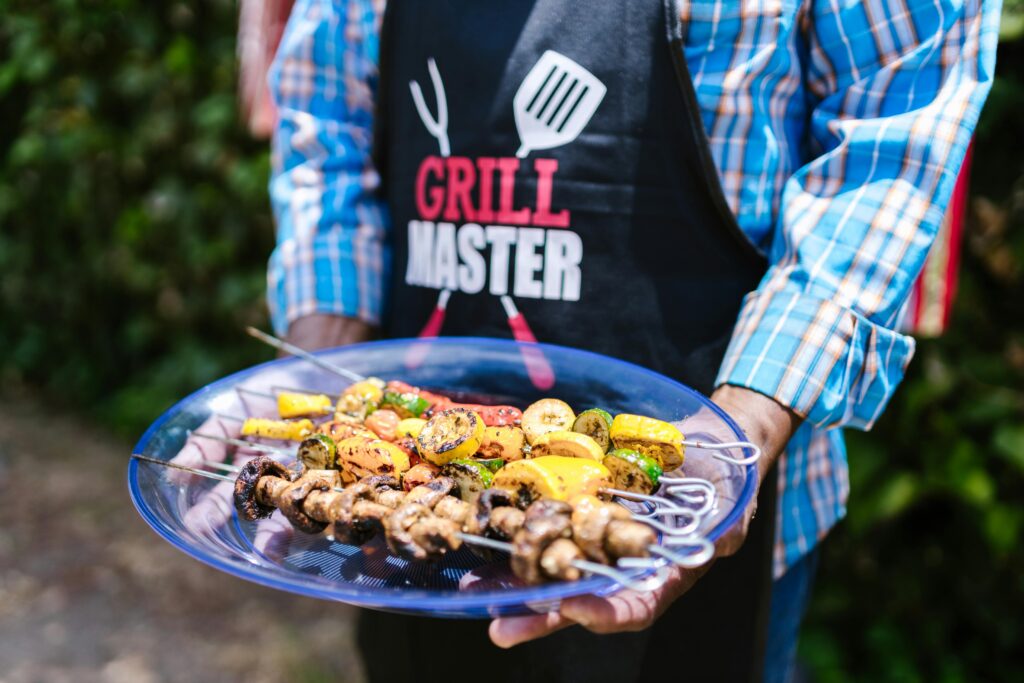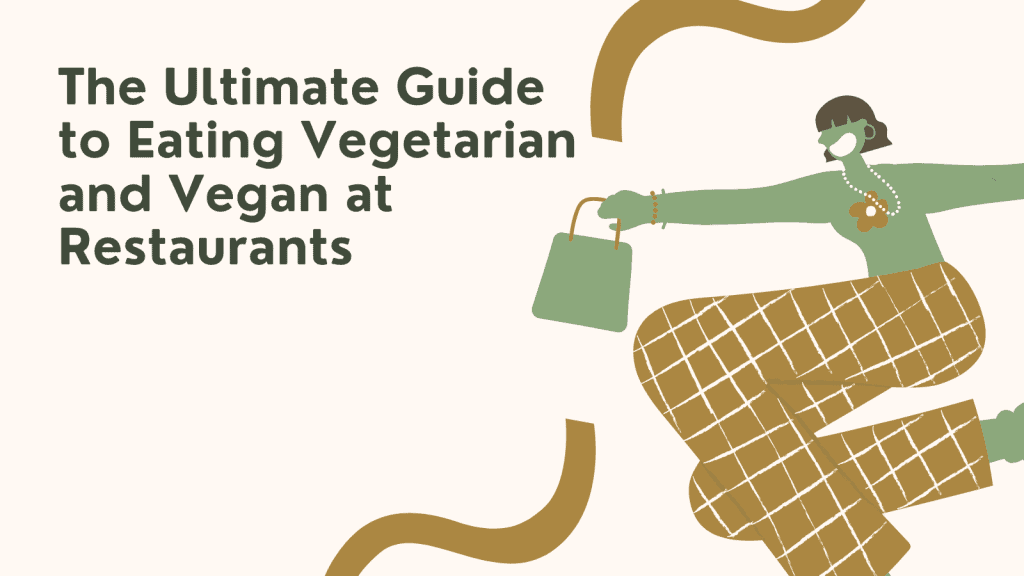The Ultimate Guide to a Plant-Based Diet: What It Is, Benefits, Nutrition & How to Get Started
Practical, flexible, and beginner-friendly—this guide shows you how to eat more plants without feeling restricted. It’s designed with real life in mind: budgets, kids, tight schedules, and dining out.
Plant-based eating isn’t about perfection. It’s about flipping the script so plants—vegetables, fruits, legumes, whole grains, nuts, seeds, herbs, and spices—take center stage, while animal products and ultra-processed foods move to the sidelines. Some people go fully vegan. Others keep a door open for a Saturday omelet or a holiday favorite. Wherever you land on that spectrum, adding more plants tends to pay off: better energy, easier digestion, simpler grocery bills, and fewer “what do I even order?” moments when you’re out.
If you’re brand-new here, start with our quick intro on the homepage: What’s Vegetarian: Your Ultimate Guide to Vegetarian Dining.
Why Plant-Based Eating Is More Than a Trend

Food culture is changing fast. Grocery aisles, coffee shops, and restaurant menus are all leaning into plant-forward options, and it’s not just marketing—people want meals that feel good during and after eating. A plant-based pattern checks those boxes without forcing you into a rigid label. It gives you flexibility to adapt around travel, family life, and whatever your day throws your way.
- Flexible, not fragile: You choose your level—vegan, vegetarian, or flexitarian—and adjust over time.
- Skills over sacrifice: Success comes from learning a few basics: how to build filling meals, where to find protein, and how to scan menus quickly for wins.
- Real-world proof: Most global cuisines already lean heavily on plants. You’re not reinventing the wheel—you’re learning to use it.
The Benefits You Can Actually Feel
Let’s keep this practical. Here’s what most people notice when plants start taking the lead on their plate.
Everyday Wins
- Steadier energy: Fiber-rich foods slow digestion and support stable blood sugar.
- Better digestion: A thriving gut loves a variety of plant fibers. Hello, regularity.
- Easier weight maintenance: Plants tend to be more filling for fewer calories.
- Satisfaction without the crash: Balanced plates (protein + fiber + healthy fats) keep you full and focused.
Long-Game Health
- Heart-smart: Plant-forward meals are naturally lower in saturated fat and rich in fiber.
- Whole-body support: Antioxidants and phytonutrients help your body handle oxidative stress.
- Family-friendly: With a few go-to meals, it’s easy to cook once and feed everyone—picky eaters included.
The Planet Wins, Too
Choosing plants more often typically reduces resource use across the board. You don’t have to be perfect to make a difference—swapping a few meals per week still helps. If you’re eating out and not sure what’s truly vegetarian, lean on our dining guides while you’re on the go:
- Dining Out as a Vegetarian: Tips & Tricks
- Where to Find Vegetarian Food Near You
- All Vegetarian Dining Guides
What “Plant-Based” Actually Looks Like
There’s no one “right” version. Pick the lane that fits your life now, and shift as you go.
- Vegan: No animal products at all.
- Vegetarian: No meat or fish; may include dairy and/or eggs.
- Flexitarian: Mostly plants with occasional animal products—great onramps here.
- Whole-Food, Plant-Based (WFPB): Focus on minimally processed plants; limit refined oils/sugars.
- Pescatarian: Vegetarian + seafood.
If your main friction point is restaurants, start where you’ll feel wins fastest. Try these chain-specific guides when you’re out with friends or on a road trip:
Olive Garden • McDonald’s • Panda Express • Culver’s • Jack in the Box • Wingstop • The Habit • Carl’s Jr. • Whataburger • Checkers & Rally’s • Captain D’s • Tim Hortons
The Nutrients to Prioritize (and How to Hit Them Without Stress)
You can meet all your needs with a plant-forward diet, but a few nutrients deserve a game plan. Think of the table below as your “checklist by food group.” Build your week around these, and you’ll be covered.
| Nutrient | Why It Matters | Plant-Based Sources | Real-World Tips |
|---|---|---|---|
| Protein | Tissue repair, immune support, staying full | Lentils, chickpeas, black beans, tofu, tempeh, edamame, quinoa, nuts, seeds | Aim for a protein anchor each meal: beans or tofu at lunch/dinner; nuts/seeds at breakfast. |
| Iron | Oxygen transport, energy | Lentils, beans, spinach, pumpkin seeds, quinoa, fortified cereals | Pair iron with vitamin C (citrus, peppers) to boost absorption. |
| Calcium | Bone/muscle function | Fortified plant milks, calcium-set tofu, kale, broccoli, tahini, almonds | Use fortified milk in coffee, oats, and smoothies for easy wins. |
| Vitamin B12 | Nerve health, red blood cells | Fortified plant milks/cereals, nutritional yeast, supplements | Most plant-forward eaters take a simple B12 supplement; it’s low-cost insurance. |
| Omega-3s | Heart/brain health | Chia, flax, hemp, walnuts; algae-based DHA/EPA | Stir ground flax into oats; consider algae DHA/EPA if you prefer a supplement. |
| Iodine | Thyroid function | Iodized salt, seaweed (nori, wakame, kelp) | Use iodized salt at home; keep seaweed snacks around for quick add-ons. |
New to scanning menus and ingredient lists? Bookmark this quick read so you don’t get tripped up by sneaky animal products: 7 Foods That Seem Vegetarian But Aren’t Always.
How to Transition Without Overwhelm

You don’t need a kitchen remodel or a new identity to eat more plants. Start small, lock in a couple of wins, and build from there.
Step-by-Step On-Ramp
- Pick one meal per day to make plant-based (breakfast is easiest).
- Add “Meatless Monday” (or any day) and keep it consistent for a month.
- Swap staples: dairy milk → oat/soy/almond; mayo → hummus; ground meat → lentils/mushrooms.
- Batch once, eat twice: Cook a pot of beans or a tray of roasted veggies to simplify weekday meals.
- Use restaurant allies: When dining out, scan our Vegetarian Dining Guides and the Dining Out Tips.
7-Day Starter Meal Plan
Use this as a template. Repeat favorites, swap meals, or scale portions for your household.
| Day | Breakfast | Lunch | Dinner |
|---|---|---|---|
| Mon | Overnight oats with berries + chia | Lentil soup + whole-grain toast | Chickpea curry + brown rice |
| Tue | Spinach-banana smoothie (add peanut butter + flax) | Hummus + veggie wrap | Black bean tacos, avocado, salsa, slaw |
| Wed | Avocado toast, pumpkin seeds, cherry tomatoes | Quinoa salad with roasted veg + tahini | Tofu stir-fry with broccoli + snap peas |
| Thu | Coconut yogurt, fruit, granola | Mediterranean chickpea bowl | Veggie lasagna (cashew cream) + side salad |
| Fri | Oat pancakes + berries | Sweet potato & black bean burrito | Thai green curry with tofu + veggies |
| Sat | PB-banana smoothie (add oats) | Buddha bowl (brown rice, greens, beans, tahini) | Eggplant “parm” + salad |
| Sun | Tofu scramble breakfast burrito | Tomato basil soup + toasted sourdough | Portobello burgers + baked sweet potato fries |
Headed to a chain instead of cooking? Use our guides to place stress-free orders: Olive Garden, McDonald’s, Panda Express, and more in the Dining Guides hub.
Smart Pantry, Smart Budget
Plant-based can be cheaper than the standard diet if you lean on whole foods over fancy packaged substitutes. Here’s a pantry that works for busy weeks.
Core Staples
- Grains: oats, brown rice, quinoa, whole-grain pasta, corn tortillas
- Legumes: black beans, chickpeas, lentils (dry or canned)
- Nuts & Seeds: almonds, walnuts, peanuts, chia, flax, hemp
- Dairy Alternatives: fortified plant milks, unsweetened yogurt
- Sauces/Boosters: tahini, soy sauce/tamari, vinegar, mustard, nutritional yeast
- Freezer MVPs: peas, broccoli, spinach, mixed veg, edamame, frozen fruit
- Produce Workhorses: onions, garlic, carrots, bell peppers, greens, potatoes, bananas, apples
Money-Saving Tips
- Buy dry beans/lentils in bulk and cook a big batch on weekends.
- Keep a “use-it-up” night to clear the fridge—grain bowls and stir-fries rescue leftovers.
- Lean on frozen veggies/fruit: cheaper, just as nutritious, zero stress about spoilage.
- Skip the pricey meat substitutes for everyday meals; treat them like occasional extras.
Eating Out Without the Guesswork
Restaurants can be the easiest place to lose momentum. The trick is having a 60-second game plan: scan, ask, order.
- Scan the sides: Pair a couple of veggie-heavy sides for a legit meal.
- Ask for swaps: Extra veggies instead of meat, dairy-free cheese if available, olive oil + lemon in place of creamy dressing.
- Check our guides: When you’re seated, open the right vegetarian restaurant guide and order with confidence.
For a bigger strategy overview (how to talk to servers, how to scan menus, what to ask for), see Dining Out as a Vegetarian: Tips & Tricks.
Common Challenges (and How to Solve Them Fast)
“I miss my favorites.”
Find duplicates you actually enjoy. Burgers? Try lentil or black-bean patties with your usual condiments. Creamy pasta? Cashew cream + roasted garlic. Pizza? Dairy-free cheese has come a long way—mushrooms + olives + arugula do heavy lifting.
“I’m not sure what’s truly vegetarian.”
Some foods hide animal ingredients (broths, sauces, glossy finishes). Keep this one bookmarked: 7 Foods That Seem Vegetarian But Aren’t Always.
“My family isn’t on board.”
- Cook base + add-ons: make a plant-based base (grain, veg, beans) and let everyone add toppings/proteins they like.
- Don’t announce a “diet”—just serve great food.
- Repeat winners and rotate new things slowly.
“I’m worried about nutrients.”
- Pick a protein anchor each meal.
- Use fortified plant milks daily.
- Consider a B12 supplement; add vitamin D/iodine/omega-3s if needed.
Flexitarian: The Practical Middle Lane
If “all-in” isn’t your style, build a flex plan. It’s plant-first with room for favorites, travel, and holidays. You still get most of the benefits without feeling boxed in.
- Make breakfast/lunch plant-based every day; keep dinner flexible.
- Use animal products as flavor accents, not the foundation.
- Plan anchors: beans twice a week, tofu/tempeh once, lentils once—momentum without mental load.
Quick-Start Recipes (No Culinary Degree Required)
15-Minute Chickpea Smash Sandwich
- Chickpeas, mashed + lemon + dill + celery + Dijon + a little vegan mayo
- Serve on whole-grain bread with lettuce and tomato
Weeknight Sheet-Pan Dinner
- Roast a mix of broccoli, peppers, onions, chickpeas
- Toss with olive oil, garlic, paprika; serve over quinoa with tahini drizzle
5-Minute Power Oats
- Microwave oats + fortified plant milk; stir in ground flax, peanut butter, frozen berries
On nights you’d rather not cook, pick a guide and order confidently: Olive Garden, McDonald’s, or browse the full list in Vegetarian Dining Guides.
Kitchen Workflow That Actually Saves Time
- Double up: Cook grains/beans once, eat twice (bowls, burritos, soups).
- Theme nights: Tacos, curry, pasta—same structure, different fillings to prevent burnout.
- Use your freezer: Portion soup/stew leftovers in mason jars; label with painter’s tape.
- Prep “building blocks”: a sauce (tahini/lemon), a protein (tofu/beans), a roasted veg tray—mix & match all week.
Beginner Grocery List (Copy/Paste)
- Oats, brown rice, quinoa, whole-grain pasta
- Black beans, chickpeas, lentils (dry/canned)
- Frozen veggies & fruit
- Onions, garlic, carrots, potatoes, greens
- Apples, bananas, seasonal fruit
- Fortified plant milks & yogurt
- Tofu, tempeh, edamame
- Almonds, walnuts, peanuts
- Chia, flax, hemp seed
- Tahini, soy sauce/tamari, nutritional yeast
Frequently Asked Questions
Do I need supplements?
Most plant-forward eaters take a simple B12 supplement. Depending on your sun exposure and diet, vitamin D, iodine, and an algae-based omega-3 can make sense. Always personalize based on your context.
Can kids eat plant-based?
Yes, with the same principles: protein anchors, fortified milks, and lots of variety. Keep meals familiar and colorful.
How do I order when everyone else wants fast food?
Use the chain-specific playbooks: McDonald’s, Jack in the Box, Whataburger, Checkers & Rally’s, Culver’s, Panda Express.
What about “hidden” animal ingredients?
They pop up in soups, sauces, and even breads. Stay sharp with this guide to sneaky non-vegetarian foods.
Your Next Steps (Simple, Actionable, and Sustainable)
- Pick one meal this week to make plant-based every day (breakfast is easiest).
- Choose one “Meatless” day and put it on the calendar for the next four weeks.
- Stock five pantry staples you’re missing from the list above.
- Bookmark the Dining Guides hub for your next night out.
- Read Dining Out as a Vegetarian: Tips & Tricks and pick two tips to use this week.



